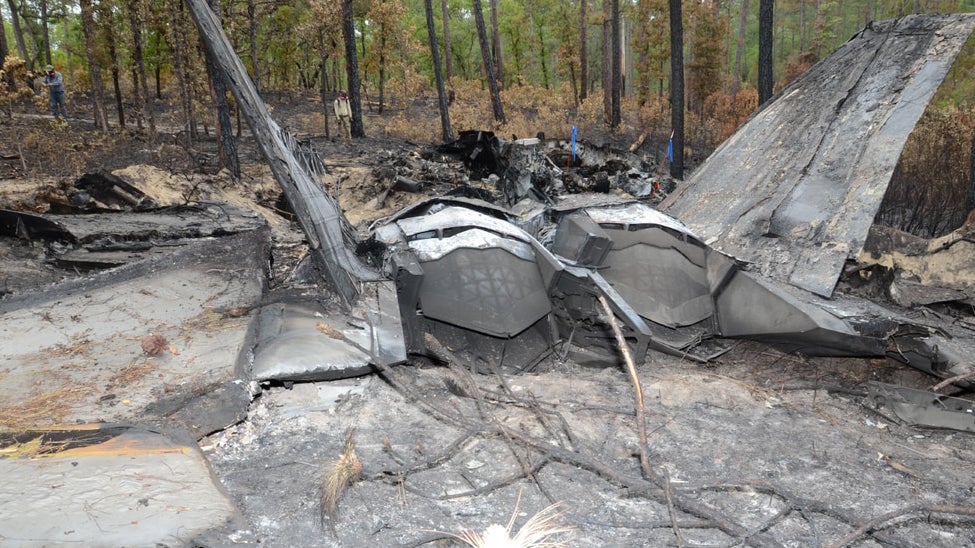Substantial details have emerged about the crash of a U.S. Air Force F-22 Raptor stealth fighter close to Eglin Air Force Base, Florida, on May 15 last year, our original coverage of which you can find here. As well as the loss of one of the precious Raptors, the incident also saw a near-miss involving more F-22s and F-35s, some of which almost collided immediately after the crash. In addition, the accident report describes how the Raptor pilot experienced a catalog of problems with the jet from soon after takeoff until he was finally forced to eject and the aircraft spiraled into the ground.
We knew already that the root cause of the crash was a maintenance error after the F-22 had been washed, which affected its control inputs. Otherwise, the Air Force remained tight-lipped about the accident and declined to run a more expansive investigation, citing operational security concerns. Now, more information is available, thanks to documents released to Air Force Times through the Freedom of Information Act and written about here by Rachel S. Cohen.
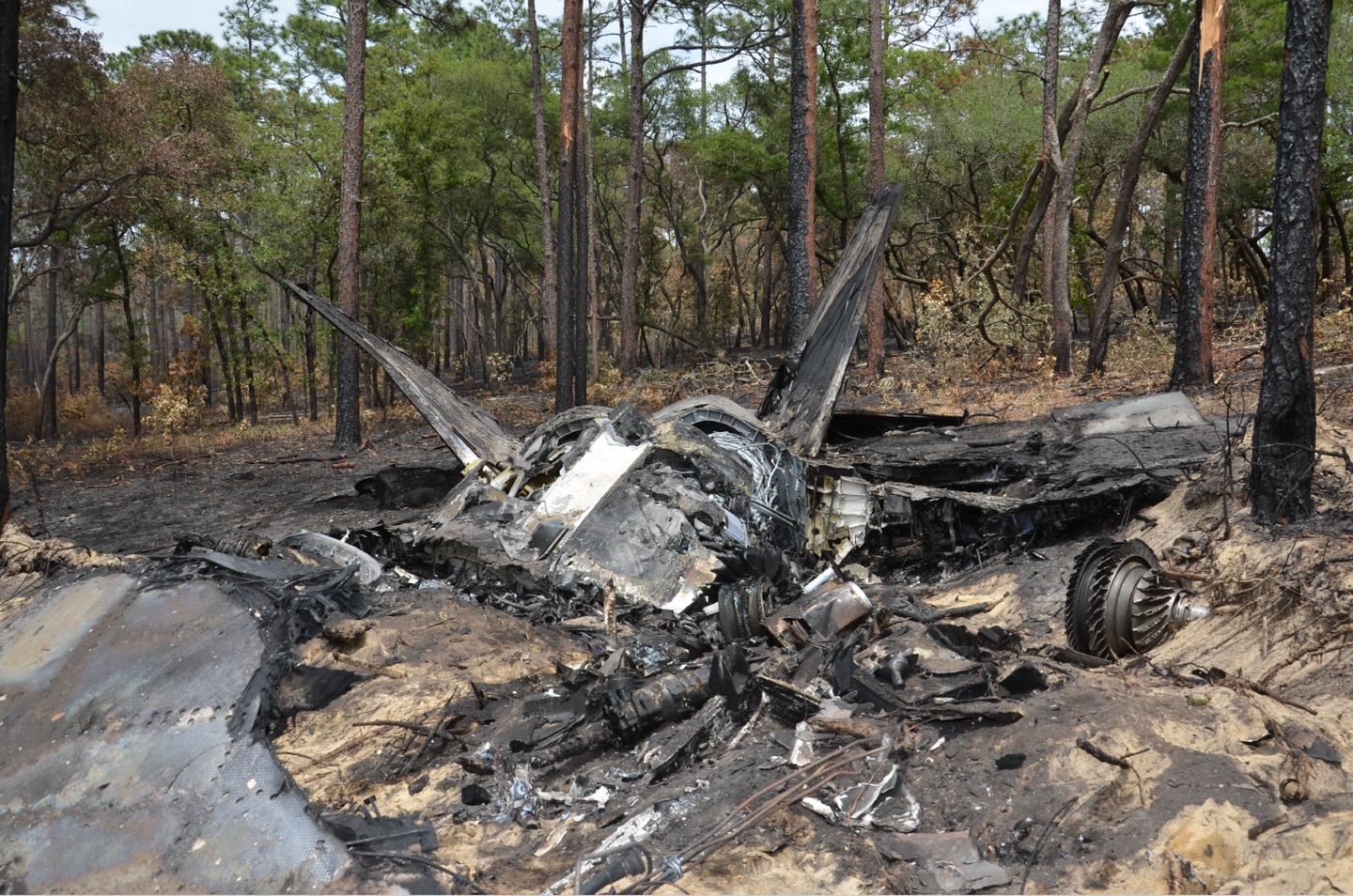
Flown by the 43rd Fighter Squadron’s assistant operations director, the F-22 departed Eglin Air Force Base using the callsign Hornet 1. It was supposed to take part in training as part of a group of three F-22s, six F-35s, and four F-16Cs.
But the Raptor’s pilot saw the first sign of trouble as soon as the jet took off when a cockpit warning light began flashing. There were no other obvious problems, so he pressed on, but at a height of only around 50 feet, the jet began an uncommanded roll to the left.
At this point the pilot feared a possible flame-out in the left engine, so throttled back both the Raptor’s Pratt & Whitney F119 turbofans and leveled out, while his wingman checked over the engine for any obvious problems.
With the F-22 now in a 45-degree climb, the pilot was presented with a second warning light, this time indicating degraded air data. Another roll to the left and a pitch-down followed, leaving the jet “almost inverted,” according to his wingman.
“I thought that I was out of control at that point and was concerned that I might have to eject right there,” the pilot told the investigators.
Again, however, the pilot regained control and decided to continue with the exercise.
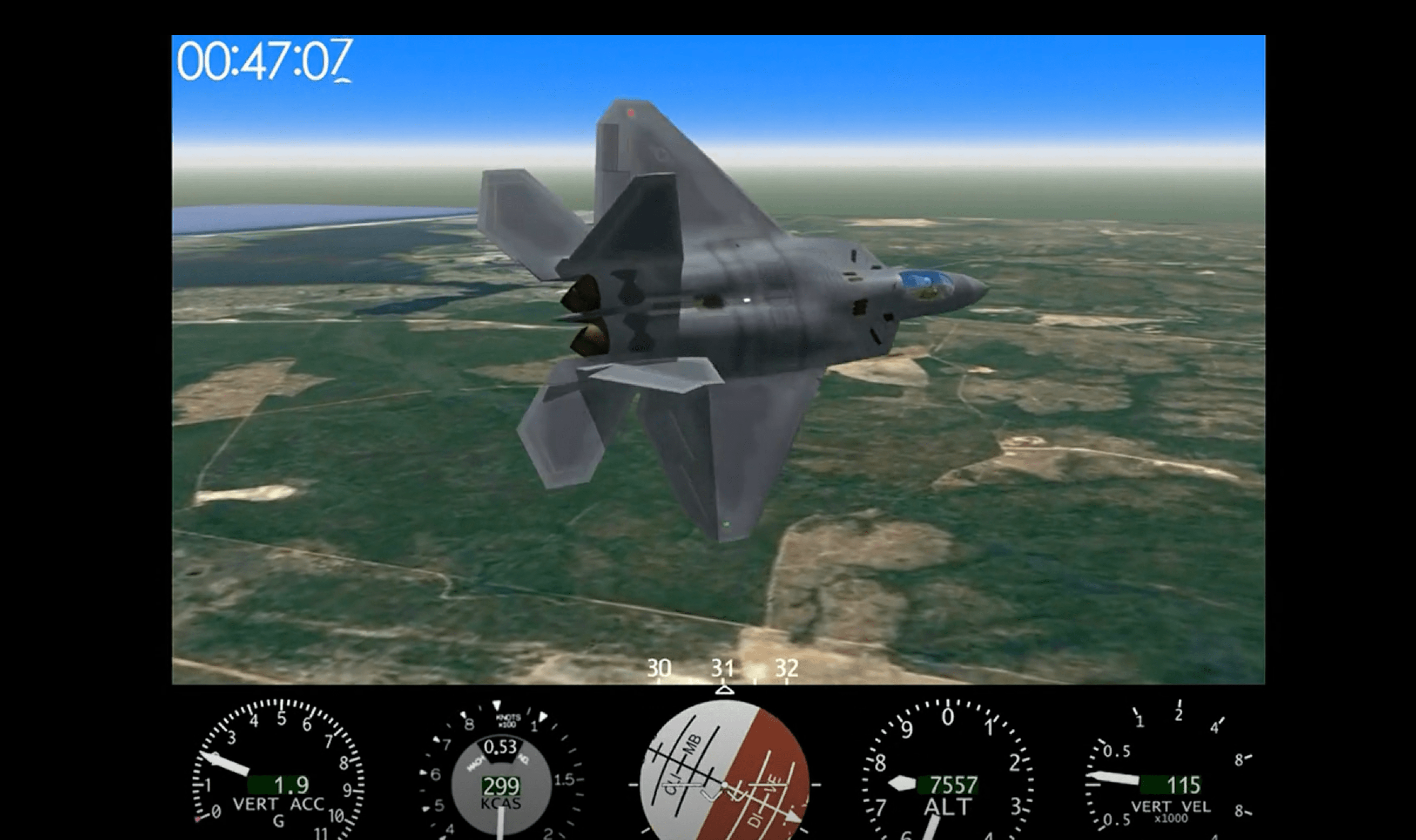
At this point, yet another warning light appeared, telling the pilot the airframe was becoming overstressed by g-forces and he made the call to return to Eglin, burning off fuel on the way.
“As I passed 10,000 feet, the jet began to have uncontrollable tendencies again … a barrel-roll type feel,” the pilot said. “It took a majority of the pressure I had available in my right arm to keep the airplane in level flight, and then at that point, I could no longer turn left.”
While battling with the controls, the pilot looked over the cockpit display, which seemed to be showing incorrect altitude and speed values, compared to what his wingman was reporting. At this point, the decision was made to eject, and the Raptor spiraled to the ground, ending up in a fireball on the Eglin Training Range.
After the F-22 pilot had floated down to safety under his parachute, F-35s from the same training mission headed to the scene with the aim of relaying the coordinates to rescuers, remaining in the area to oversee the recovery. In fact, the pilot was picked up by a passing government vehicle and then taken to a local hospital where they received treatment for minor injuries.

The day then almost got a whole lot worse for the Air Force. The F-35s coordinating the rescue began to run low on fuel and left, but almost collided with F-22s in airspace that the documents describe as “saturated and … fairly dangerous.” Exactly how many jets were involved in this near-miss is unclear, although the jets would have been part of the two F-22s and six F-35s that were still airborne over the range at the time.
Added to the mix were Air Force U-28A Draco intelligence, surveillance, and reconnaissance aircraft from Hurlburt Field in Florida. Air Force fighter jets performing in a local flyover had also been expected to be in the area before their route was changed.
The accident report described the near-miss as “a learning opportunity for future emergency response coordination in the area,” according to Air Force Times.
Clearly, the incident could have been a lot worse, in what was already a sorry month for Eglin, where an F-35A crashed upon landing just four days later, on May 19, 2020, the pilot ejecting after struggling with an extraordinary catalog of problems with the jet. As it was, those two accidents led to a “safety pause” on flying operations at the base.
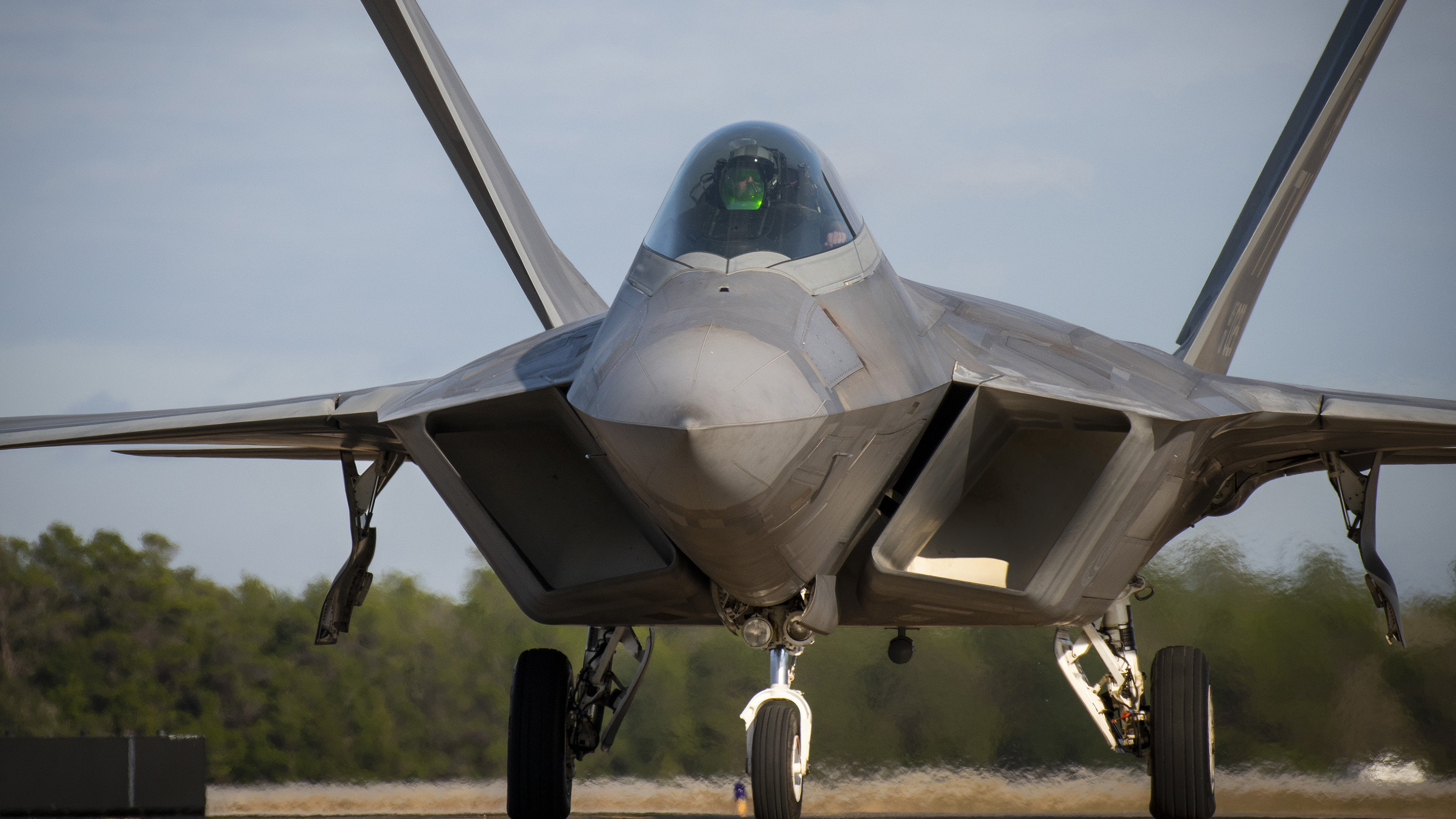
In the event, the Raptor mishap resulted in more than $202 million in damage, including environmental cleanup costs.
The root cause of the accident was a maintenance error made after the aircraft was washed, the indication being that a procedure already in place was improperly followed by one or more ground crew. This error “impacted control inputs transmitted to the aircraft,” according to the Air Force, but no further details have been provided, and it’s unclear if changes have been made in maintenance procedure, or remedial work carried out on any other aircraft.
All in all, the Air Force’s public response to the incident has been somewhat bizarre, including the original decision to waive the requirement to conduct a traditional accident investigation, which would then be released publicly. The decision is more unusual since this was a Class A mishap, a category involving incidents causing more than $2.5 million in damage or in which a person is killed or permanently fully disabled.
The loss of any Raptor, however, is a big deal for the Air Force, even if the service is beginning to look to its eventual replacement.
Before the May 2020 crash, the Air Force had 186 Raptors total, of which just around 125 were assigned to combat-coded units.
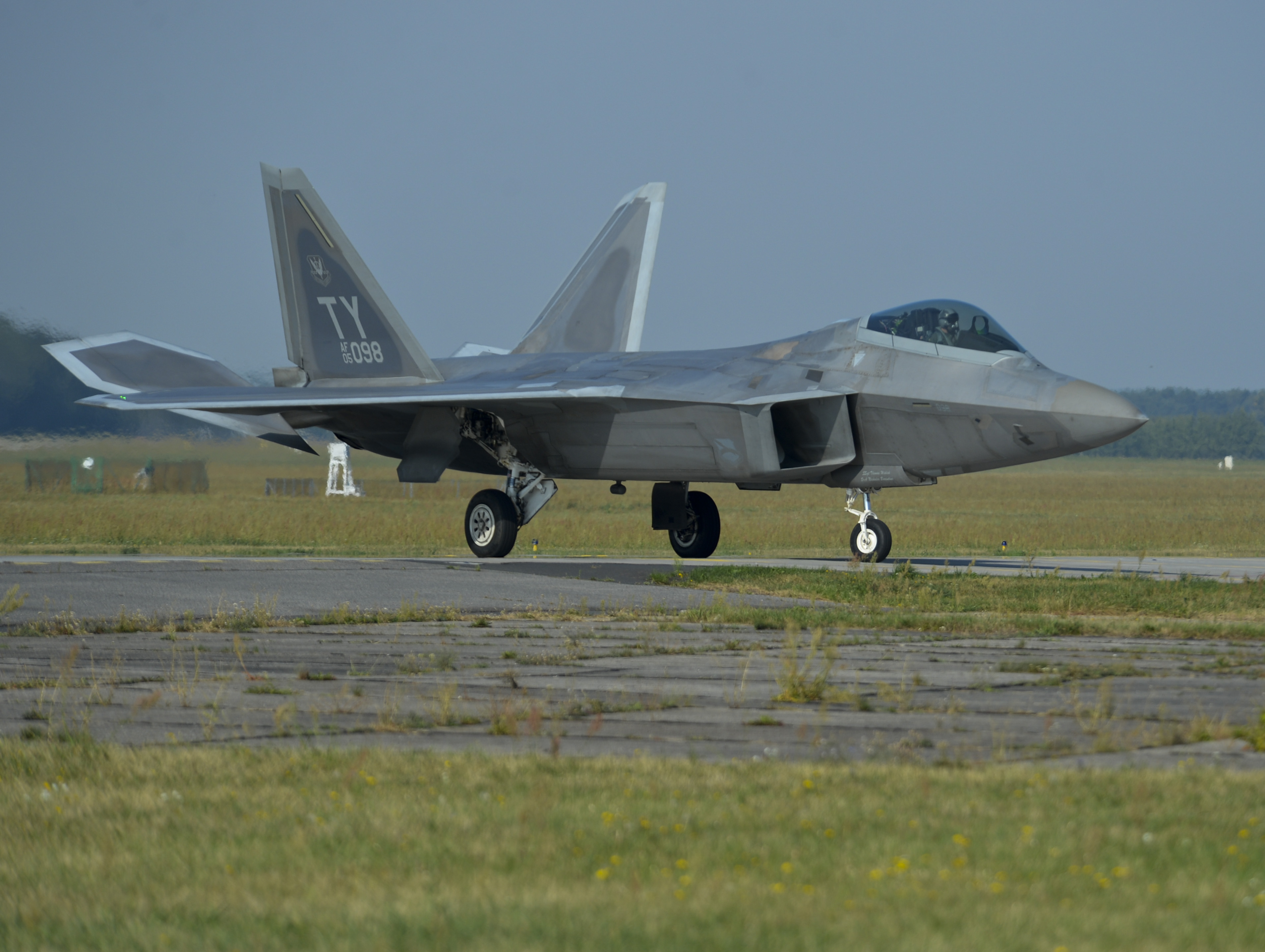
In March of this year, an F-22 suffered a nose gear failure at Eglin, the pilot landing the jet after suffering an unspecified in-flight emergency, an incident you can read about here.
The small fleet enjoys a “silver bullet” status within the service but has faced other challenges as well as attrition. On the flight line, the F-22 has suffered from mission-capable rates that are notoriously low, something The War Zone has explored in-depth, generally hovering somewhere below 50 percent overall.
When Hurricane Michael hit Florida in October 2018, a number of the jets, along with supporting units, were forced to leave their home base of Tyndall Air Force Base and move to Eglin.
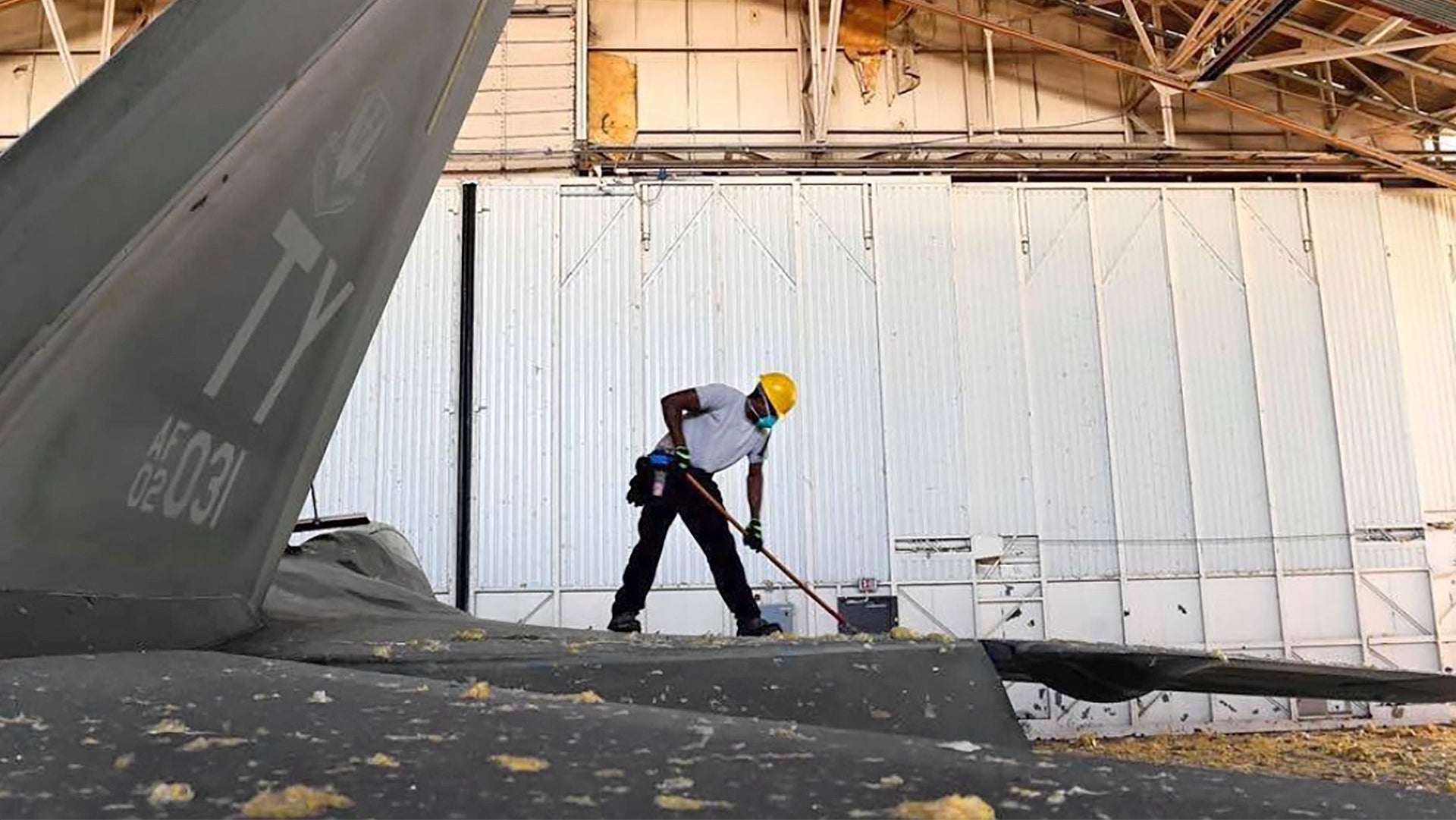
The 43rd Fighter Squadron, which serves as the designated F-22 Formal Training Unit (FTU), remains at Eglin, although its long-term home could be Joint Base Langley-Eustis, in Virginia.
According to Air Force Times, 43rd Fighter Squadron’s parent 325th Fighter Wing has “struggled with staffing and morale in the years since the hurricane as airmen feel stuck in limbo between Tyndall and a potential move to Joint Base Langley-Eustis.”
While there is no evidence pointing to this situation having influenced the May 2020 Raptor crash, the incident does reinforce just how vulnerable the small, but ever-important F-22 fleet is to any kind of attrition, as well as how an apparently minor maintenance incident can have dramatic consequences.
Contact the author: thomas@thedrive.com
